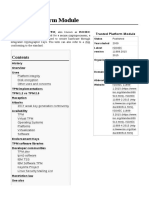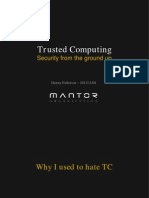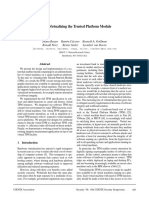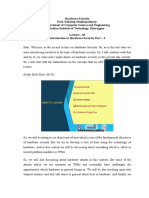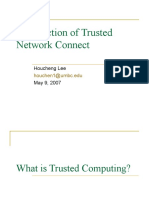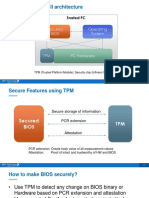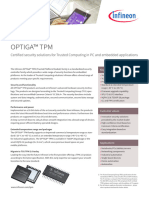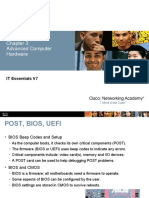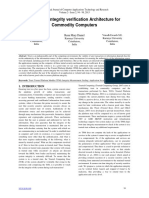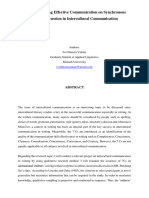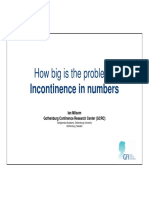0% found this document useful (0 votes)
20 views37 pagesTMP & Optical
The document provides an introduction to Trusted Platform Module (TPM), detailing its basic concepts, functions, and applications in trusted computing environments. It explains the role of TPM in establishing a chain of trust from hardware to software, as well as its integration with BIOS. Additionally, it covers optical modules, their working principles, parameters, and classifications, emphasizing the differences between single-mode and multimode fibers.
Uploaded by
EMC FECopyright
© © All Rights Reserved
We take content rights seriously. If you suspect this is your content, claim it here.
Available Formats
Download as PDF, TXT or read online on Scribd
0% found this document useful (0 votes)
20 views37 pagesTMP & Optical
The document provides an introduction to Trusted Platform Module (TPM), detailing its basic concepts, functions, and applications in trusted computing environments. It explains the role of TPM in establishing a chain of trust from hardware to software, as well as its integration with BIOS. Additionally, it covers optical modules, their working principles, parameters, and classifications, emphasizing the differences between single-mode and multimode fibers.
Uploaded by
EMC FECopyright
© © All Rights Reserved
We take content rights seriously. If you suspect this is your content, claim it here.
Available Formats
Download as PDF, TXT or read online on Scribd
/ 37







